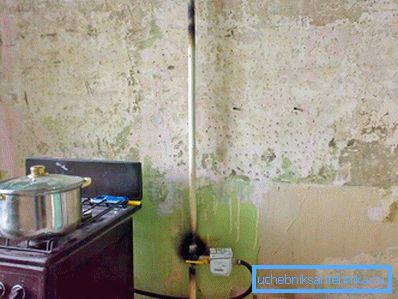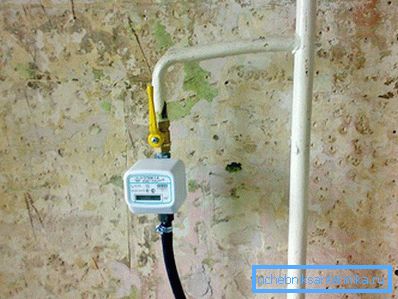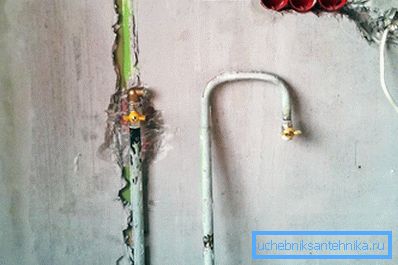Carrying a gas pipe in the kitchen
Replacing any elements of the gas mains is traditionally associated with a high risk caused by the dangerous nature of the energy supplied through them. That is why the independent transfer of the gas pipe in the kitchen is possible only after mastering the skills of the relevant works, and also with the availability of official permission to carry them out.
In addition, the potential performer must have a certain understanding of all the intricacies of the preparatory procedures, allowing to properly assess the possibility (and sometimes the need) to transfer the pipe to another place.
Preparation for work
Before starting work, you will need to contact your local district gas supply organization with an application for obtaining permission to carry out the transfer of a gas stove connection point.
A technician arriving at your request should familiarize himself with the conditions for laying pipes and decide on the possibility (and also options) of their transfer. After you have paid for the call and the upcoming work at the ticket office of the district organization, you will be assigned a date for the arrival of gas specialists. At the end of the transfer of pipes in the apartment must be prepared a statement of the work carried out and make the appropriate mark in the gas passport of your equipment.
Tip! If you decide to move the pipes yourself, you should notify the relevant district services and also familiarize yourself with the basic requirements of regulatory documentation.
General order of work

The transfer point of the gas pipe to the stove should be made in the following sequence:
- First, by means of a valve installed on the pipe, the flow of gas into the stove is blocked.
- Then, the disconnected part of the pipeline is purged with any method available in domestic conditions (in order to remove residual gas from it).
- The unnecessary piece of gas pipe outlet is cut off by the grinder, and the hole formed is simply welded.
- After that, a new hole is made in the supply pipe, to which a tap from a piece of metal pipe is welded.
- Finally, a valve is mounted directly on the outlet, from which a threaded connection is made to the gas cooker.
Note also that the installation of a gas stove in any place convenient for you can be made without transferring the point of its connection to the gas main. It is possible to realize this possibility with the help of a flexible bellows hose of about 2 meters in length, which allows free movement of the slab within a small range.

Upon completion of the entire complex of installation work (immediately before switching on the stove), the gas valve and the new outlet from the pipe are checked for leaks. Circuit testing is performed in the traditional way, that is, using conventional soap solution. When testing, a solution prepared on the basis of water and soap is applied with a brush on all newly formed gas pipe connections.
Tip! In the event that, after the valve is turned on, soap bubbles appear at the junction points of the gas assemblies, you will have to repeat all the operations on sealing the joints again, since this indicates poor-quality sealing performance.
Technical requirements

According to the requirements of building codes, the gas pipe can be moved to a new location only if the following conditions are met:
- the transfer of branches from the gas mains to the residential part of the premises is strictly prohibited;
- their laying in mines of ventilation wells is also unacceptable;
- it is forbidden to cover the pipe bends behind the decorative casing (except for cases with the use of easily removable structures);
- when parallel laying the gas outlet and the power supply cable, the distance between them should be at least 25 cm. At the same time, the pipes should be at least 50 cm away from the distribution box installed in the kitchen;
- the distance between the openly laid supply and located in the immediate vicinity of the pipes of sewage, heating or plumbing should be sufficient for their inspection and maintenance;
- when laying gas pipes it is necessary to exclude their intersections with ventilation grilles, as well as with window and door openings;
- for mounting the gas outlet to the wall, special brackets or clamps should be used, the distance between which is set according to the SNIP №2.04.12-86.

In conclusion, we note that a competent transfer of gas pipes, made in compliance with the basic construction standards, is a guarantee of reliable operation of the entire gas supply system as a whole, and will not cause complaints from the relevant authorities.